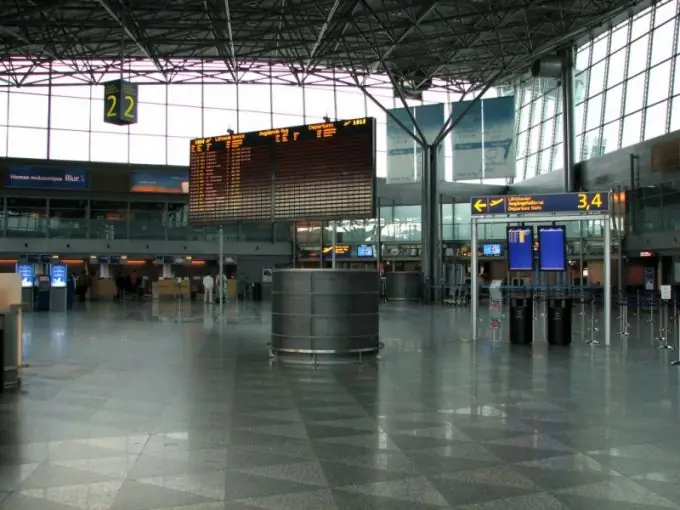- Author Nora Macey [email protected].
- Public 2023-12-16 10:17.
- Last modified 2025-01-23 08:47.
The airport is a complex structure consisting of several complexes. Each large structure has an air terminal, an airfield, and a large number of technical rooms for servicing aircraft. Any airport has a terminal where various services operate, for example, border control or cargo and baggage handling.

Work with passengers
Each major airport has several lobbies and passenger terminals. First, each person who wants to make a flight undergoes an initial control for the presence of substances prohibited for carriage in their luggage. Then the passenger goes to the check-in counter, where the baggage is checked in and passenger tickets are checked. A tag with an identifier is stuck on the baggage, and the passenger goes to the control area.
If the norms for the import of various items into the country of arrival are exceeded, a serious fine may be imposed.
The control is divided into two zones: green and red. The green corridor is used by most passengers who carry cash, alcohol and cigarettes as permitted under special requirements. The red corridor is used to declare excess baggage allowance and pay an additional duty on a number of items that are specified in the airline's rules for using.
After completing the procedure, passengers go to the boarding area. A bus is often used to transport passengers from the terminal to the plane. Some airports are equipped with special sleeves through which the boarding gate is carried out.
Each aircraft stand is uniquely marked, according to which the aircraft is directed to the runway.
Airport baggage compartment
From the check-in counter, the baggage is sent on a separate journey. Each suitcase is assigned a specific number, which is entered into a special database and encoded in a barcode. Luggage is sent on a moving belt for inspection and sorting. Each bag goes through a special check through a scanner that checks the bag for prohibited items.
The entire process of servicing airport clients is automated as much as possible.
If nothing is found in the suitcase, it is sent for sorting. If the scanner suspects the presence of a prohibited substance, the baggage is sent for additional inspection, where verification is carried out using additional scanners that are more sensitive to certain prohibited elements. In the event that the baggage has not passed additional control, the bag goes to manual inspection.
Each air carrier sets its own rules for checking and storing baggage, as well as imposes restrictions on the size and weight of carry-on baggage.
After a successful check, the baggage is sent for shipment, from where it is delivered to the aircraft's baggage compartment using special forklifts.






